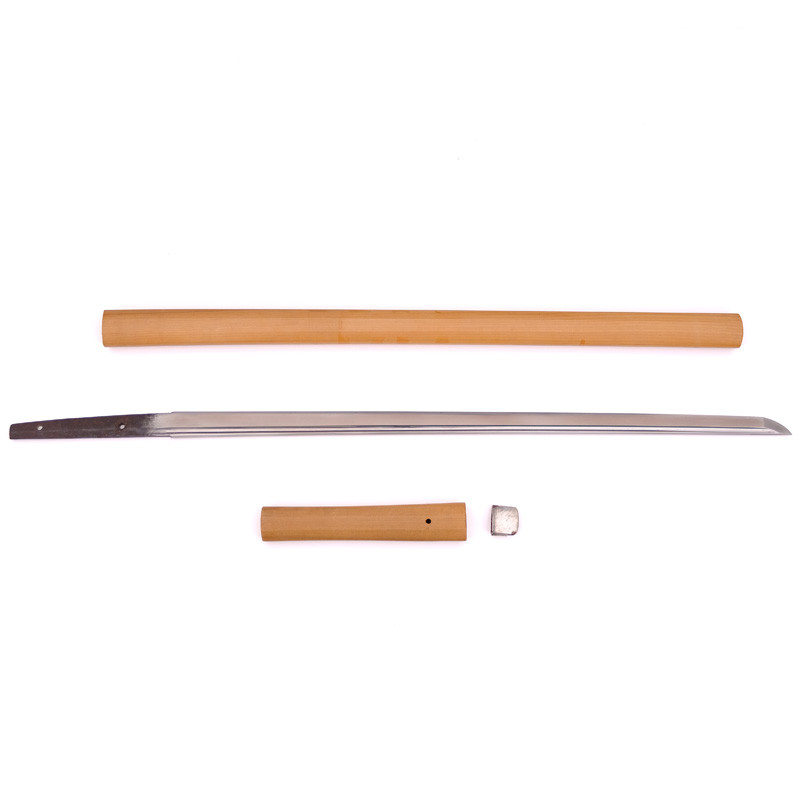














More informations about this product
| Total Weight | 0.844 kg | |
| Weight without Saya | 0.647 kg | |
| Blade Weight | 0.557 kg | |
| Full Blade length (Toshin) | 84.5 cm | |
| Nagasa | 67.1 cm | |
| Nakago Length | 17.5 cm | |
| Sori (curvature) | 0.4 cm | |
| Kissaki Length | 3.10 cm | |
| Moto Haba | 2.98 cm | |
| Saki Haba | 1.97 cm | |
| Moto Kasane | A = 0.62 cm B = 0.65 cm |
|
| Saki Kasane | A = 0.45 cm B = 0.50 cm |
|
| Curvature | Muzori-type very small curvature (without curvature) | |
| Type Kissaki | Cho Kissaki | |
| Blade Structure | Shinogi Zukuri (diamond shaped) | |
| Mune | Iori Mune (triangular) | |
| Hamon | Ko Otsuri Suguha, presence Nijuba | |
| Hada | Itame/ Mokume very visible with presence of Utsuri | |
| Boshi | Kaen Boshi | |
| Nakago | O Suri Age (strongly shortened) 2 Mekugi Ana, Kiri Yasurime, Classic shape Futsu Gata, Kiri Nakago Jiri | |
| Bohi | Presence of Bohi, Kaki Nagashi on the Nakago, Kissaki Agarari at point. | |
| Saya | Shirasaya in Magnolia weight of 0.197 kg, for a length 69.2 cm | |
| Tsuka & Tosogu (Tsuba, Menuki, Fuchi Kashira) |
- Tsuka: Weight 58g length 21.8 cm - Habaki: Weight 29 g, copper covered with silver foil |
|
| Study & Team Review |
According to recent studies, the Mihara school was founded by Kokubunji Sukekuni 国分寺助国 in Bingo province 備後国 (Hiroshima prefecture) around the Shochu era (1324-1326), at the end of the Kamakura era. |
|
Share your opinion
error Your review appreciation cannot be sent
feedback Report comment
check_circle Report sent
error Your report cannot be sent